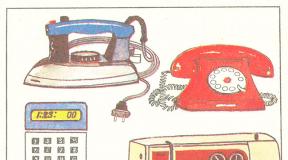Dietary tables. Diet Power Tables: Therapeutic Diet Tables in Medical Diseases
Therapeutic tables of the pesser - dietary diet, compiled for a specific disease, aimed at the activation of the health effect of treatment and facilitating the process of occupational disease.
Therapeutic diet - the great development of the Soviet professor Manuil Isaakovich Pevzner. Each of the diets is called the table and has its own sequence number. The founder of gastroenterology and nutrition is confident that food plays one of the main roles in the process of human treatment. High efficiency The tables in the Pessner each time confirmed in medical practice - such food has been introduced in all therapeutic and preventive institutions and sanatoriums.
Nutrition tables were developed not only by the exception of fried acute food, the physiology of man and the biochemistry of the absorption of various substances was taken into account. Therapeutic diet of the pessner means a list of allowed products, food intake modes and portions, culinary processing technologies and meal temperatures. Detention from the recommendations of the diet can lead to the exacerbation of the disease.
Developed 15 major healing tables, some of which are divided into subparagraphs denoted by letters. They suggest a more strict power mode for a particular case or vice versa, a diet, entrusing to the usual diet.
Therapeutic diets of Pessner №1-15 solve many medical problems on the correction of metabolism in diarrhea to purification by the urinary system with renal disease. If a person is combined at once two diseases, he needs to comply with the principles of two diets at once.
Full list of tables №1-15
Nutrition is not divided into useful and harmful, but on suitable and unsuitable for a particular case. For example, in certain diseases, recommended by the use of "harmful" in terms of proper nutrition White bread and dairy soups, but it is done in order not to irritate the gastrointestinal tract. That is why the "universal diet on Pevznera" does not exist - for each disease, its product list is drawn up.
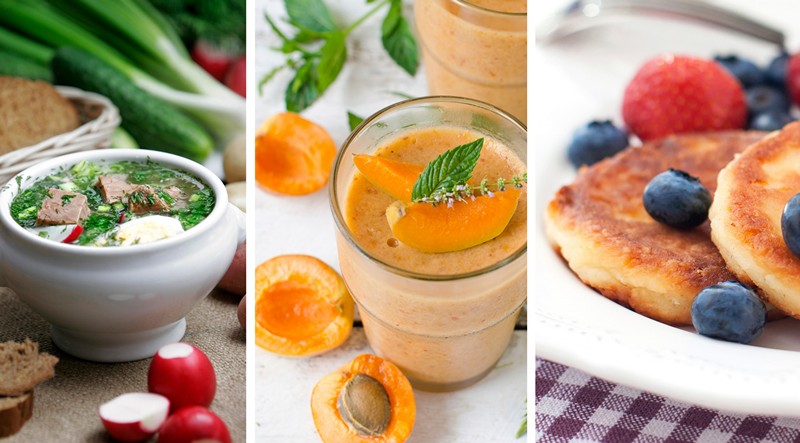
It is used for peptic ulcer (stomach and 12-percent) for six months. The goal of the table is to limit the mechanical, thermal and chemical aggression on the stomach. Daily Norma BPU: 100 g of proteins, 200 g of fats and almost 500 g of carbohydrates, which are implemented at a 3200 calorie energy value. Prohibited slowly digesory and stood in the stomach products. Power consists of vegetable overhead soups, milk, coupled, beef language and white breadwho lost freshness. Of the sweets, you can eat grazing honey, from fruits and berries.
Applied to initial stage Acute gastritis, ulcerative disease, which took place bleeding and other diseases in need of the gastric glooming. The composition of the table is adjusted under the energy value of 2000 calories, where 100 g - fats, 80 g - proteins, 200 g - carbohydrates. Hexide fractional power includes milk, berries and fruits in the menu.
- We advise you to read:
It provides for less rigid spares than table number 1a. Diet is appropriate for diseases at the final stage, when chronic gastritis or ulcerative disease Sucks. The daily table is 2600 calories, where 100 g are accounted for on proteins and fats, and carbohydrates are used in the amount of 300 g. The menu is similar to that with a diet No. 1a, only porridge is added in a flurry form and from wholegrain bread.
Prescribed with chronic gastritis with reduced acidity, colitis without exacerbations, enteritis and chronic stages enterocolites. Daily caloric content of 3000 calories, where 100 g of proteins and fats, 400 g of carbohydrates. Recommended steam menu, in which fruit and vegetable dishes will be present, lean soups, white bread crackers, cocoa. Eating smoked, salted and sweet worth limiting. Smoked, fatty meat grade, red fish, chocolate and baked baking should not be present in the diet.
It is used for chronic intestinal diseases that are accompanied by atonic constipation. The diet involves the use of a large amount of carbohydrate food up to 600 g, while proteins and fats are reduced to 110 g. The daily caloric content of the table is 4000 calories. The allowed menu includes all products rich. Under the prohibition, products with a fixing effect fall. These are pasta, snob, chocolate, rice, strong tea, kissel and grapes.
The diet is shown in the intestinal diseases, which are accompanied by diary: dysentery, chronic colitis and gastroenteritis in the aggravation stage. Energy value of the table - 2000 calories, where 250 g of carbohydrates, 100 g of proteins and 70 g of fats. The food consists of a porridge on water and post-carrying mucous soups, steam meat, white bread, strong tea and coffee. The dishes that increase the intestinal peristalsis are excluded from the menu: dairy products, baking, carbonated drinks, fresh fruits. The duration of the table is minimal (2-3 days), followed by the transition to Table No. 2 or No. 5a.
Table number 4A.
It is recommended when colitis with the predominance of fermentation processes. The energy value of the table is cut to 1600 calories, where 140 g is carbohydrates, 120 g - proteins and 50 g - fats. The diet lasts a couple of days, during which all products that irritate the intestines are limited and enhancing fermentation processes in it.
Acceptable for chronic and acute diseases Intestinal intestines in the stage of fading fermentation when combined with diseases of the stomach, pancreas, liver and biliary tract. The common calorie catalog of the table is quite high - 3100 calories, where proteins and fats are 100 g and carbohydrates about 400-450. Nutrition should have a type of steam or boiled dishes. The daily rate of free fluid is 1.5 liters. Restriction on the use of cook salt - 8 grams. All products that increase clay and fermentation processes in the intestine are prohibited. Fractional food is divided into six meals per day.
We recommend after acute intestinal diseases in combination with pancreatic diseases. The goal of the table should limit the diet from the mechanical and chemical stimuli of the gastrointestinal tract and smoothly translate the patient from the diet and classical nutrition. General calorie, list of allowed and prohibited products at the table number 4 Identically table No. 4b.
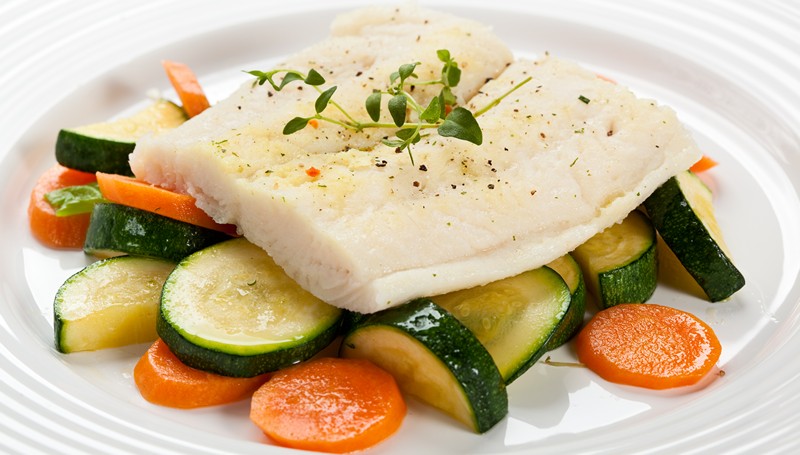
It is prescribed for diseases of the biliary tract and liver, chronic gastritis and colitis with possible constipation. Target table - spares of liver functions, cholesterol unloading and fat Exchange, activation of the intestinal work in its usual mode. Chemical composition Table: 100 g of proteins, 70 g of fats, 50 g of carbohydrates. The catering table is aimed at using vegetable salads, low-fat varieties of meat and fish, dairy products. The food in no case should be cold. It is forbidden to use greasy dishes, spices, canned food, fresh pastries, cream, butter and black coffee.
Used in diseases of the liver, gallbladder and biliary tract at the aggravation stage, with their possible combination with gastritis or colitis. Table No. 5a - transitional power after the table No. 4. This diet minimizes the mechanical irritation of the stomach and intestines by exclusion from the rude plant fiber from the menu, the other principles coincide with the principles of the table No. 5.
Prescribed solely in chronic pancreatitis. Due to the sharp restrictions in fats, proteins of animal origin and carbohydrates, daily calories fit into just 1800 calories. Regarding the vitamin and mineral composition, the diet must be full. Chemical composition of the table: 200 g of carbohydrates, 80 g of proteins and 55 g of fats. The daily intake of free fluid is 2 liters, a cooking salt - 10 g. All products that increase the secretion of digestive juices and causing the bloating of the abdomen is unacceptable. The menu should consist of steam and boiled dishes of a semi-liquid consistency.
It is used for gout and renal disease with the formation of stones of uric acid salts. The purpose of the table is to normalize the intestinal functional operation and unload purin exchange in the body. The chemical composition of the diet consists of 100 g of proteins, 110 g of fats and 400 g of carbohydrates. The power varies in the daily calorie range from 2700 to 35000. The patient's menu must contain products designed by purines. These are vegetables, fruits, fat, sugar, jam, cereals, eggs, milk. From the daily diet, it is necessary to eliminate meat soups, onions, smoked, coffee, chocolate and cocoa.
It is assigned in chronic and sharp jade and provides for moderate spurting of kidney functions. Table number 7 is a transitional option of the menu from the table number 7b to everyday power. Energy value of the diet is about 3000 calories, of which 430 g - carbohydrates, 100 g - fats and 80 g - proteins. During the treatment, the menu should consist of kefira, milk, low-fat fish, unsalted, tomato, white bread and horse rummer. Acute and salty dishes are prohibited. They interfere with removing fluid from the body. Only at the discretion of the doctor, the cook salt may be issued for self-saturating dishes in the amount of no more than 5 g per day.
Will help with severe forms renal failure and jade. The list of its responsibilities includes an increase in urinary, unloading of protein metabolism and maximum kidney spares. The daily caliper is laid in 2000 calories, among which 350 g of carbohydrates, 60 g of fats and 25 g of proteins. The patient organizes five-volume bedding. For a period of no more than 10 days, consumption of cooking salts, leguminous crops, extractive substances, meat and fish of all varieties are excluded.
It is used for chronic jade kidneys or after the table No. 7a in the stage of quietness of acute inflammatory process in kidneys. Diet tasks - increase the amount of separated urine, organize kidney parenchyma gear and organize an anti-inflammatory process. Differences in the table number 7B from No. 7a in a small increase in daily cone up to 2,400 calories, adding to the menu Kash, low-fat fish and boiled meat (no more than 50 g) and dairy soups.
It is observed in the thermal state of chronic renal failure, that is, when founding an artificial kidney on the apparatus. The common calorie table of 3000 calories, which is recruited 450 g of carbohydrates, 11 g of fat and 60 g of protein. The diet menu consists of boiled salted dishes. The amount of daily consumption of the cooking salt is 1-2 grams, free fluid - 0, 5-0.7 liters.
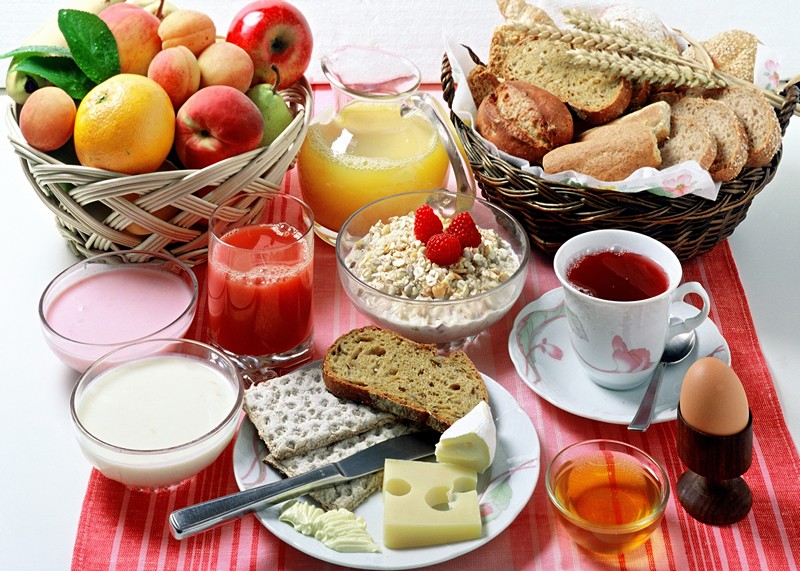
Applied at. The table menu should have low calorie from 2000 to 2400 calories, where 300 g of carbohydrates, 110 g of proteins and 65 g of fats. The diet of the table should include low-fat varieties of meat or fish, vegetable soups, fruits and berries, except grapes, bread from coarse grinding flour, but not more than 200 g per day. All sweet, fatty and high-calorie dishes, spices and spices are excluded, which excite taste receptors.
Shown for patients with diabetes mellitus with the selection of accurate insulin doses. The goal of the table is to limit carbohydrate consumption. Under the ban hits grapes, raisins, bananas, jams, sweet juices and carbonated drinks containing sugar. It is also impossible to abuse soles and pickled vegetables, meat and culinary products of high calorie. Calorie table calorierage, where 250 g of carbohydrates, 120 g of proteins and fats. Power consists of products rich in tissue and proteins: rye bread, chicken meat without skins, eggs, vinegrees, vegetables, fruits of acidic varieties, buckwheat porridge, savory tea and coffee.
Table number 10.
It is used for diseases of the cardiovascular system with insufficiency of blood circulation. This is a full-fledged diet with a limitation of the use of liquid (1.5 liters) and a cook salt (5 g). The catalog of the table is 3000 calories, among which 400 g of carbohydrates, 80 g of proteins and 70 g of fats. The menu includes low-fat veal, boiled fish, milk, cream, vegetables, berries, roshovenik and fruit compotes. All products with high fat, salts, and substances exciting are prohibited nervous system.
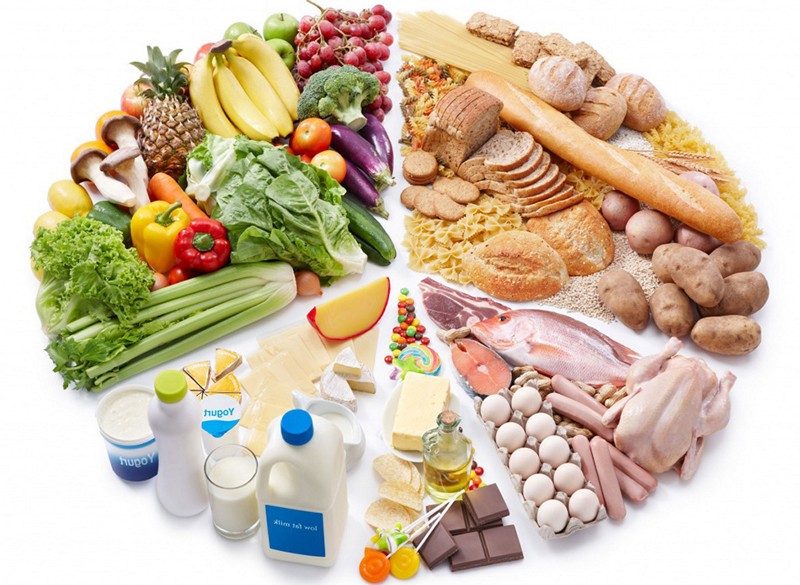
Recommended for various forms tuberculosis, as well as at a depleted state after injuries and operations. The table menu is aimed at improving the body's resistance to acute and chronic infections, strengthening immune system. Daily calorie food 4500 calories. It is gained by cereal cultures, creamy and, bread, pastry of solid varieties, milk, honey and eggs. The chemical composition of the table: 550 g of carbohydrates, 130 g of fats and proteins. From the diet, all types of animal fats and factory sweets are excluded.
It is used for diseases of the central nervous system of functional type. Target table - sedative impact on the nervous system. The caliger of the diet is 4000 calories, where 110 g of proteins and fats, 550 g of carbohydrates. The diet of the patient consists of low-fat dairy products, biscuit baking, marmalade, natural juices and seafood. All products that have a tonic effect are prohibited: strong welded soups, fat, fat fried dishes, salted, strong tea and coffee.
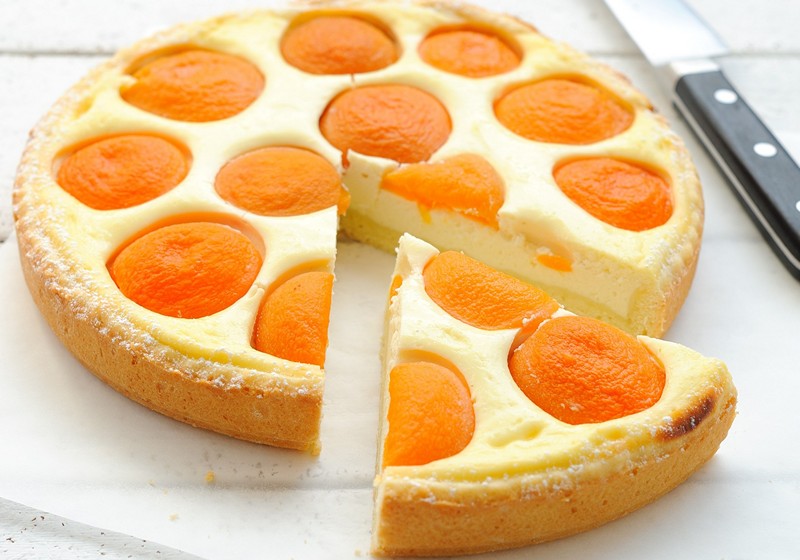
Recommended with acute infectious diseases. The chemical composition of the diet 400 g of carbohydrates, 80 g of proteins and fats fit into a daily calorie calorie. Frequent and fractional food consists of soups, porridge, pasta, eggs, fermented dairy products of a small percentage of fatty, jelly, fruit and berries in a boiled or baked form. Excluded: Doba and any fresh bread, cereal crops, fruits rich in fiber and factory sweets.
It is prescribed with a renal disease with the ease of stones from oxalates, contributing to the normalization of acid-alkaline balance. The diet involves the use of sausages, broths, pasta and various croup, eggs, honey and horseradish brazing. Calorome table - 3500 calories, where 500 g of carbohydrates, 110 g of fats and proteins. Fresh-haired juices, dairy products, vegetable soups and smoked breaths are prohibited.
It is used for various diseases that do not need a special disbelief from the classical principles of proper nutrition or after the medical diet at the final stage of recovery. Energy value of the table - 3,700 calories, recruited 55 g of carbohydrates, 110 g of proteins and fats. All high-quality products preferred by man are allowed. The table mode is reduced to a three-time meal.
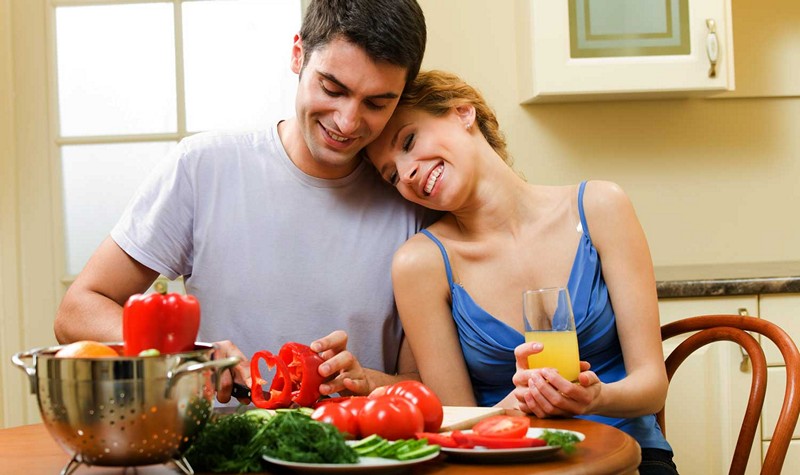
Powering for the latter table implies the use of almost all products. The restriction is based only on refractory animals, pepper and mustard.
Principles of tables on Pevznera
Therapeutic diets are based on the state of human health. All 15 tables passed numerous clinical trials and studies, so they boast competently developed menus. Moreover:
- All singer diet (except 15) obliges to organize fractional food - the daily menu should consist of 5-6 meals;
- A number of rations are designed for patients in bed and do not require maintaining physical activity;
- None of the 15 tables can replace medical treatment diseases, but is only part of a comprehensive approach to solving the problem;
- All 15 tables on the pessner are mandatory include proteins, fats, carbohydrates all dependencies on the presence of the patient state of the patient. For the full work of the body, the presence of all components of BJO must necessarily compensate for one component to other it is impossible;
- The deficit in the diet of any vitamins and minerals is replenished with pharmaceutical vitamins or badges;
- None of the 15 tables are not allowed to use alcoholic beverages even in limited quantities.
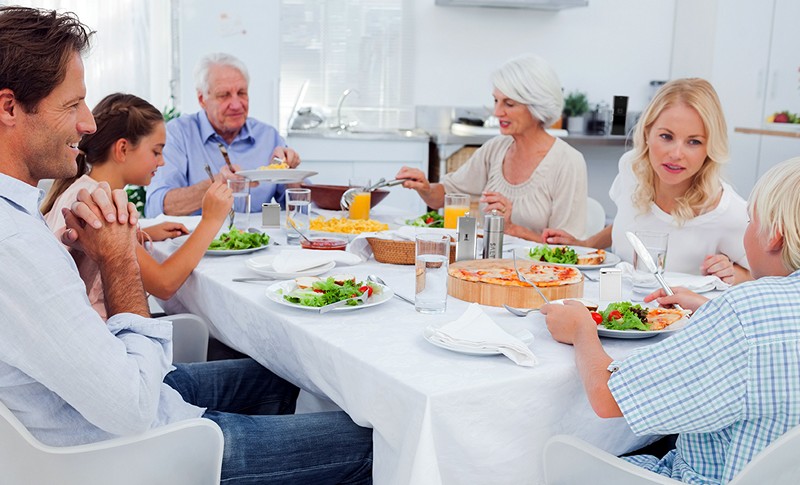
Table diet according to Pevznera is used in all therapeutic and preventivectic institutions and sanatoriums.Both diet and therapy and deviations from the recommended menu can be permissible only when resolving the attending physician. By his decision, with the same disease, completely different healing diets from 1 to 15 rooms can be assigned. The choice of the table depends on many factors, including general state Patient, degree of exacerbation of the disease and even the time of year.
With many diseases, the diet is one of the main methods of treatment, and in some and the only one, for example, in obesity and easily current diabetes mellitus. In the healing nutrition, it is important not only to competently pick up the products, but also to prepare them correctly. Also important meals, time and frequency of its reception. Violations of the power mode can lead to exacerbation of the disease. For example, with diabetes mellitus, this may cause increased blood sugar, strengthening thirst, dry mouth, hypertensive use of salted food can lead to an increase arterial pressure.
In therapeutic and sanatorium institutions, the license system of diets is used, many of which exist in several versions. After the aggravation of the disease passed, the patient needs to continue to observe common. First of all, this concerns products that must be excluded from the diet, but other ways of culinary processing can be used. Any, including medical diets №1-№15, completely exclude alcohol. If one person combines two diseases in which special nutrition needs, it must comply with the principles of both diets.
Diet number 1, 1a, 1b - ulcer stomach and duodenal gut;
Diet number 2. - chronic and acute gastritis, colitis, enteritis, chronic enterocolites;
Diet number 3. - constipation;
Diet №4, 4A, 4B, 4V - intestinal diseases with diarrhea;
Diet number 5, 5a - diseases of the biliary tract and liver;
Diet number 6. – urolithiasis disease, Gout;
Diet number 7, 7a, 7b - chronic and acute jade;
Diet number 8. - obesity;
Diet number 9. – diabetes;
Diet number 10. - diseases of the cardiovascular system;
Diet number 11. - tuberculosis;
Diet number 12. - diseases of the nervous system;
Diet number 13. - sharp infectious diseases;
Diet number 14. - kidney disease with the disorder of oxalate stones;
Diet №15 - Diseases that do not require special diets.
Table number 1 It is shown in gastritis with increased acidity and under the ulcer of duodenum and stomach for half a year and a year after exacerbation. Recommended: rubbed soups, boiled pured vegetables, rubbed porridges, boiled low-fat fish and meat, steam cutlets from fish and meat, boiled chicken chicken, milk, vegetable and butter, cream, nice sour cream and sour cream, eggs skey duct , Sweet fruits and berries, fruit and vegetable juices. Food should be taken four or five times a day in warm form.
Table number 17. It is shown during the exacerbation of chronic gastritis with increased acidity, with exacerbation of ulcers. It is recommended: mucous soups, milk, liquid porridges, eggs sick, souffle from low-fat fish or meat, olive and butter, berry kislets, cream, fruit juices, tea, decoction of rosehip. Salt need to be limited, and liquids drink no more than one and a half liters per day. Food should be taken every two or three hours in warm form.
Table number 1B. It is shown in patients with sinking chronic gastritis and peptic ulcer. It is recommended: in addition to the products listed earlier, you can use steam fish and meat dishes, rubbed milk soups with vegetables, rubbed milk porridges, wheat crushers. It is necessary six times a day, to limit salt consumption.
Table number 22. Shown in chronic colitis and chronic gastritis with reduced acidity. Recommended: Vegetable and cereal soups on fish, mushroom and meat broths, boiled chicken, low-fat meat, cutlets, low-fat boiled fish, low-fat ham, low-fat lowly herring, butter, milk and milk products, non-smear cheese, porridge, eggs, dusty cheese White bread, fruit, vegetables, vegetable and fruit juices, coffee, tea, cocoa, sugar marmalade. It is necessary five times a day, better in mature form.
Table number 3. Showing atonic constipation. You can eat products containing a large amount of plant fiber, figs, prunes, compotes, fruit and vegetable juices, carrot, beets, dried fruits, kefir, cream, milk, prostropro, black bread, pearl and buckwheat porridge, honey, fried meat and Fish, sugar, vegetable and butter. At the same time, abundant drinking is recommended, including mineral carbonated water. It is impossible to use cocoa, strong tea, kisins, mucous soups. If static constipation, you need to limit the products rich in vegetable fiber.
Table number 4. Shown in exacerbations of intestinal diseases. You can use cocoa, strong coffee and tea, stale crackers from white bread, eggs sick, cottage cheese, manna and rice porridge on water, boiled meat and fish, three-day kefir, kisyl, decoction of blueberries and black currant. Salt must be limited.
Table number 4A. Shown when colitis. There is a need for the same as in the fourth diet, but you need to limit the products rich in carbohydrates and increase the content of proteins.
Table №4B Shown patients with chronic colitis when damping the disease. Recommended: A stale white bread, broth with meatballs, soups from cereals on meat or fish broth, rubbed porridge, steam and boiled vegetables, unshearch cheese, kefir, nice sour cream, dry biscuit, not biscuited cookies, kisins and compotes from savory fruits and berries , coffee with milk, tea, butter. There is a warm food four or six times a day.
Table number 4 Shown in chronic and acute intestinal diseases during recovery period. This power mode is assigned to ensure full-fledged nutrition in disruption of the intestinal operation to restore the function of others. digestive organs. The diet is physiologically full with the restriction of salt consumption and a small increase in the number of protein food. It eliminates products that increase the processes of rotting and fermentation in the intestine, activates its secretion, as well as secretion of the pancreas and stomach. Prepare dishes are needed for a pair, in crushed form, or bake or cook. You need to eat five times a day.
Table number 5. Showing for people with diseases of biliary tract, gallbladder and liver out of stage of exacerbation. You should use dairy and fruit soups without meat, soups from cereals on vegetable broth, boiled fish, bird and meat of non-fat varieties, cottage cheese, kefir, milk, flour dishes and porridge, white and black stale bread, sweet berries and fruits, greens and vegetables , honey, jam, sugar, fruit and vegetable juices, faint tea with milk. It should be limited to consumption of fats and salts. It is necessary five times a day. You can not use alcoholic beverages, brains, liver, legumes, spickers, spinach, mushrooms, onions, sorrel, oily meat and fish, pill, smoked, sharp and oily products, vinegar, spices, canned food, cocoa, ice cream, creams, chocolate, drinks with gas.
Table number 5A. Recommended for chronic pancreatitis. Food is the same as with diet number 5, but more products containing protein containing products, limit products containing fats and carbohydrates. All food must be cooked for a pair, in crushed and rubbed.
Table number 6. Shown in renal disease and gout. It is recommended to use black and white bread, milk and dairy products, honey, sugar, dairy and vegetable soups, cereal products, sweet fruits, fruit juices, jam, cucumbers, salad, carrots, bay leaf, vinegar, lemon, low-fat fish and meat, eggs. At the same time you need to drink at least two or three liters of fluid. You can't eat meat soups, kidneys, liver, brains, smoked and fried meat, ear, roast fish, herring, fat, sardines, springs, mushrooms, pies, spinach, sorrel, legumes, cocoa, coffee, alcohol and strong tea.
Table number 7. Showing people with chronic kidney diseases in the absence of renal failure. Vegetarian soups, low-fat bird, meat, fish, gray and white bread with bran, pasta, cereals, flour dishes, milk and dairy products, cottage cheese, vegetables, greens, fruits, berries, jam, honey, sugar. It should be limited to the consumption of sour cream and cream. Food should be hexiras. It is impossible to drink carbonated drinks, there are creams and cakes, legumes, mushrooms, fish and meat broths, canned food, smoked, pickles.
Table number 7a Shown during acute and chronic jade in the aggravation stage. There is needed boiled vegetables, fruits, flour and cereal products, white bread without salt, tea with milk, butter, sugar. Power must be fractional, salt must be completely excluded. If uremia is developing, it is necessary to reduce the daily consumption of proteins to twenty grams per day, especially vegetable.
Table number 7b Shown during recovery after acute inflammation of the kidneys. This diet is transition from No. 7 to number 7. You can eat white abolving bread, boiled low-fat fish and meat, reduce salt intake.
Table number 8. shown in obesity. For this diet, a decrease in the energy value of the diet due to carbohydrates, partially fats, while the protein content must be normal. In addition, salt exciting appetite products and free fluid should be used in limited quantities.
One day should be consumed hundred grams of proteins, eighty grams of fats, one hundred fifty grams of carbohydrates. Rye bread, protein-cut and protein-wheat bread, soups from vegetables with croups, borsch, soup, beetroot, okrochka, low-fat fish, bird, meat in stew, baked or boiled form, jelly, beef sausages, seafood, milk , cheese, cottage cheese, fermented milk products. Fruits and vegetables can be found in any form. It should be excluded from the diet of the product from a dough test and top grade flour, pasta, legumes, cereal and potato soups, fatty fish, bird and meat, smoked, sausages, canned food, sweet berries and fruits, legumes, bold cheese, cottage cheese, cream, pasta Products, oatmeal and semolina, sharp and greasy snacks, mayonnaise, sauces, spices and spices.
Table number 9. Shown with diabetes mellitus easy and moderate. The energy value of the diet should be reduced due to animal fats and easily friendly carbohydrates, the sweet should be excluded. In the daily diet of proteins there should be about one hundred grams, fats - eighty grams, carbohydrates - three hundred grams. There are protein-francular, wheat, rye bread, Vegetable soups, low-fat fish and meat broths, fish, bird and meat of non-fat varieties, milk, cheese, low-fat cottage cheese, fermented milk products, cereals, vegetables, potatoes, sweet-sweet berries and fruits. It is impossible to use fatty and strong broths, busty flour, salty fish, sausages, semolina, rice, pasta, pickled and salted vegetables, raisins, grapes, jam, sugar, candy, lemonade, sweet juices.
Table number 10. Shown in diseases of the cardiovascular system. It should be slightly reduced by energy value due to carbohydrates and fats, limit the consumption of salts and products that contribute to the excitation of the cardiovascular system. On a day, the ninety grams of proteins should be consumed, from which a little more than half of animals, seventy grams of fats, four hundred grams of carbohydrates. A stale bread should be used, biscuit, non-biscuits, vegetarian soups, milk, cottage cheese, dairy products, bird, fish and meat of non-fat varieties, cereal and pasta dishes, baked and boiled vegetables, ripe fruit, jam, honey. Exclude from the diet you need products from a dough, fresh bread, mushrooms, fish and meat broths, soups from legumes, sausages, smoked, kidneys, fatty and salty cheeses, salty fish, legumes, sauer, pickled and salted vegetables, fruits containing rude fiber, cocoa, strong coffee, tea, chocolate.
Table number 11. It is shown in the tuberculosis of bones, lungs, joints, lymph nodes during the period of non-aggravation or recovery, in the postoperative period, after injuries, while exhaustion after infectious diseases. Diet is characterized by an increased energy value with large content Proteins, minerals and vitamins. Every day a hundred twenty grams of proteins should be consumed, one hundred grams of fats, four hundred grams of carbohydrates. You can eat almost all the dishes, except for very oily birds and meat, culinary, beef and ram, cakes and cakes with lots of cream.
Table number 12. Showing people with functional diseases of the nervous system. You can have many products with the exception of strong soups, sharp seasonings, smoked, fried and fatty dishes, strong coffee, tea, alcohol. It is necessary to limit salt and meat a little. It is advisable to use the language, liver, legumes, dairy products more often.
Table number 13. It is recommended to people with acute infectious diseases. The energy value of this diet decreases mainly due to carbohydrates and fats, while it is rich in vitamins. A day should be consumed eighty grams of proteins, sixty grams of fats, three hundred grams of carbohydrates. The diet includes dried wheat bread, low-fat fish, bird and meat, low-fat meat and fish broths, cereal mucous heaps, vegetable soups, cottage cheese, milk drink, beets, carrots, potatoes, tomatoes, cauliflower, witch buckwheat, semolina and rice Porridge, ripe berries and fruits, marmalade, jam, jam, honey, sugar, decoction of rosehip. It should be excluded from the diet of fresh bread, busty flour, fatty fish, bird, meat, fat broths, smoked, sausage, canned food, salted fish, cheeses, fatty sour cream, cream, whole milk, pasta, bias and pearl croup, millet, bow , garlic, radish, radishes, white cabbage, legumes, cucumbers, cocoa, cakes, chocolate, fruit with high fiber content.
The diet is one of the important methods of treatment with many diseases. With diseases such as sugar diabetes of light flow, alimentary obesity is the only one. With therapeutic nutrition, not only the correct selection of products is important, but also the adherence to the technology of culinary treatment, the temperature consumed by patients with food, multiplicity and meal reception time.
The exacerbations of many diseases are connected with various excesses in nutrition:
1) chronic pancreatitis After consuming fatty sour cream, pancakes, alcoholic beveragesfried dishes;
2) Violations in a diet with diabetes mellitus lead to a sharp increase in blood sugar, to dry mouth, thirst strengthening, progresses fatty infiltration of liver and pancreas;
3) an increase in blood pressure in patients suffering hypertensive disease, It is observed when the salty food is used, the treatment prescribed is little effectively.
In all therapeutic and preventive and sanatorium institutions use the license system of diets. Many of them have several options, for example: N 1A, 1B, N 7A, 7B, 7B, 7G.
Doetting doctors after the examination prescribe a specific diet number or give its description. Below are the numbers of dietary tables, in which diseases are indicated for greater convenience, under which a certain diet should be observed.
Medical diet, dietary tables
Dietary table number 1- acute gastritis in the phase of recovery, ulcer of the stomach and a 12-roll intestine with a non-timber and sharp exacerbation at the stage of recovery, exacerbation of chronic gastritis in a unaware form with increased or saved secretion.
Diets for diseases. Diets in disease
Before sitting on a diet " Medical diet, diet with diseases", consult your doctor!
Reviews of diet
My 2 friends put in the preteract, and now they feed on dietary correctly, and I never could lie there, I don't accept college students (I also want to lose weight, look! Found on the Internet sample menu dietary table, from tomorrow I start + make a massage of problem areas and water procedures)
Alisha)
A nutritionist advised me on vacation a diet. Very helped me. + Swim in the pool + exercise. With a swimming pool, in the same time, it began to be friends, in the hotel ..
I would advise only to a nutritionist regarding all kinds of diets. To me, with my gastritis, everything is right and effective advises. Golden man and specialist
Only a doctor can say that right and what is not! You can get advice also in the sanatorium. In Truskavets there is a Sanatorium "Vernigor" - pretty new and modern. Doctors there are already trained in modern technologies and methods, and not scooping. These people can really rely on. It is very important that they have an individual approach to each. Since the sanatorium is based on the sources of mineral waters, so there is a phyto bar where you can eat herbal tea)
Br.Ludi Tehory go crazy, these are therapeutic diet!
maybe enough to spam with your diet from the sites, the usual divorce for money, how can you make a diet, only in the test, which is suggested to pass? there not only need to determine which parameters do you have, what do you usually eat and do you save, but also take analyzes different, know what a person in life is doing, and what is offered to pass, this is a complete nonsense, many also Psychological support is needed. On sites already pre-prepared templates of diets, which can be found later on the Internet without any problems, have you ever been testing?
gygy, sat on the first table, when in the hospital lay - girls, here it is, the most effective diet) on the first table do not eat. Yes, and on the fifth is not particularly somehow. In general, I will tell you, better for all diets for weight loss, and then therapeutic will have to be observed, the gastritis is so. Or bacchistatin parallelly drink, I saw it during gastritis, removes very well. And the doctor then said that it is possible to heal prophylactically. Before the post, many drink, so that the stomach does not disrupt.
Irina is so, a person is divided by a really working method. Yes, there for a fee, with me, too, 150 rubles from the phone were removed, but I received an individual diet thanks to which 13 kilograms dropped.
Tatyana
And here, weight loss is how the normal person should eat with the appropriate disease, and not for weight loss, for recovery and not to start the disease!
Diet number 0.
Indications: The first days after the operations on the stomach and intestines (appointed no more than 3 days).
Characteristic: Chemical, mechanical spares. Eating every 2 h. (From 8 to 22 hours). Food is given in a liquid and jelly form.
Assortment of products and dishes: tea with sugar (10 g), fruit and berry kislets, jelly, apple compote (without apples), decoction of rosehip with sugar; On 10 g of butter is added to the rice decoction and fastening meat broth.
Diet number 1 a
Indications: A sharp aggravation of the ulcer of the stomach and duodenal in the first 5-7 days of treatment; sharp aggravation of chronic gastritis in the first days of treatment; Acute gastritis for 1-4 day of treatment, the burn of the esophagus.
Characteristic: Mechanical, chemical and thermal spares of the mucous membrane of the stomach and duodenum; All food in a liquid or semi-liquid form. Emission of food is 6-7 times a day, the mass of the diet is about 2.5 kg, salt - up to 8g.
Soup milk and mucous membranes and wheat Bran. With butter, rubbed vegetables (carrots, beets) and puree from dilated skinny meat or fish, soup manual milk. Souffle of dressed skinny meat and fish. Porridge liquid, rubbed, dairy. Eggs Skump, steam oslet. Milk whole. Suffle from freshly prepared cottage cheese. Broth rosehip, faint tea. Butter cream or olive is added to the dish.
Excluded: Plant fiber, broths, mushrooms, bread and bakery products, milk-sour products, spices, snacks, coffee, cocoa.
Diet number 1 b
Indications: aggravation of ulcer of the stomach and duodenalist, 10-20 days of the disease; Acute gastritis, 2-3 days.
Characteristic: more moderate (compared to diet No. 1a) mechanical, chemical and thermal spares of the mucous membrane of the stomach and duodenum; All food in a semi-liquid and mature form. Food reception 6-7 times a day, weight of diet to 2.5 - 3 kg, salt 8-10 gr.
Assortment of products and dishes: Dishes and Diet Products No. 1a, as well as white, thinly chopped and unimagined crumbs - 75-100 grams., 1-2 times a day meat or fish bedrooms or meatballs, rubbed milk porridges and dairy soups from rice, bump and pearl croup, Water vegetable puree, jelly, jelly from sweet varieties of berries and fruits, juices, divorced in half with water and sugar, sugar, honey.
Diet number 1.
Indications: aggravation of ulcerative disease, stage of sinking; Chronic gastritis with preserved and increased secretion during the exacerbation period.
Characteristic: Moderate mechanical and chemical spurting of the mucous membrane of the stomach and duodenum; Food boiled and preferably in the witch form. Meal of food 5-6 times a day, weight of the diet - about 3 kg, salt - up to 8-10 g
Assortment of products and dishes: Bread white and gray yesterday, scari white, biscuit. Soups are dairy from the rubbed and well-strained croup with the addition of rubbed vegetables (except cabbage). Steam cutlets (meat, fish), chicken and fish, boiled or steam, puree vegetable, cereal and puddings rubbed, boiled or steam; Eggs sick or steam omelet. Sweet varieties of berries and fruits, juices of them, sugar, honey, jam, baked apples, kislets, mousse, jelly. Milk whole, cream, fresh sour cream, fresh low-fat cottage cheese. Tea and cocoa are stupid, tea with milk, cream. Robber blade, butter creamy, unsalted. Plant refined oil in dishes.
Restrictions: Rough vegetable fiber, broths.
Excluded: Spices, strong coffee, mushrooms, boiled eggs.
Diet number 2.
Indications: Chronic gastritis with secretory insufficiency, acute gastritis, enteritis, colitis during the reconstruction period (as a transition to rational nutrition).
Characteristic: The diet is mechanically gentle, but contributing to the increase in gastric secretion. Boiled food, baked, roasted without breading. Salt salt up to 15 gr. Per day.
Assortment of products and dishes: White bread yesterday, non-uncommunicable breadcrumbs, 1-2 times a week suffocating baked pies. Soups from cereals and vegetables on meat and fish broth. Non-fat beef, boiled chicken, stew, steam, baked, roasted without breading and jelly. Fish low-fat slices or on chopped boiled, steam, fuel. Herring sweated chopped. Vegetables: potatoes (limited), beets, carrots in the witch form boiled, stew, baked; Raw tomatoes. Compote, Kissel, jelly, mousses from ripe fresh and dry fruits and berries (except melons and apricots), fruit and vegetable juices, baked apples, marmalade, sugar. Milk whole with good tolerability. Kefir, cottage cheese fresh raw and baked; Cheese unshearch grated; Smetana - in dishes. Meat sauces, fish, sour cream and on a vegetable brave. Bay leaf, cinnamon, vanillin. Tea, coffee, cocoa on water with milk. Butter creamy and sunflower. Eggs sick, omelet fried.
Excluded: Bean and mushrooms.
Diet number 3.
Indications: chronic diseases With the predominance of constipation, the period of the unaware of exacerbation and the period of remission.
Characteristic: An increase in the diet of products rich in vegetable fiber and products that enhance the motor function of the intestine. Salt salt 12-15 g per day.
Wheat bread from coarse flour, black bread with good tolerability. Soups on a degreased broth or vegetable brave with vegetables. Meat and fish boiled, baked, sometimes chopped. Vegetables (especially deciduous) and fruit raw in large quantities (prunes, figs), sweet dishes, compotes, juices. Crumbling porridge (buckwheat, pearl). Cottage cheese and cheesery, one-day kefir. Hard boiled eggs. Butter creamy and olive are added to the dishes.
Excluded: turnip, radish, garlic, mushrooms.
Diet number 4.
Indications: Acute enterocolites, aggravation of chronic colitis, a period of profuse diarrhea and sharply expressed dyspeptic phenomena.
Characteristic: Diet, chemically, mechanically and thermally sparing intestines. Eating 5-6 times a day. All dishes are prepared for a couple, rubbed. Cook salt 8-10 g. Duration diet 5-7 days.
Assortment of products and dishes: White bread crags. Soups on a non-fascinated meat broth, cereals with egg flakes, semolina, rubbish rice. The meat is low-fat and in the chopped form boiled or steam. Bird and fish low-fat chicken, boiled or steam. Porridge and puddings from rubbed croup on water or low-fat broth. Juices from fruits and berries, decoction of rosehip, blueberries. Tea, cocoa on water, jelly, jelly. Eggs (with good tolerability) - no more than 2 pcs. per day (skey or steam omelet) butter creamy 40-50 g.
Limited: Sugar up to 40 g, cream.
Excluded: Milk, vegetable fiber, spices, snacks, salting, smoked, legumes.
Diet number 5.
Indications: acute hepatitis and cholecystitis, recovery period; Chronic hepatitis and cholecystitis, liver cirrhosis.
Characteristic: Maximum liver spares. Limiting animal fats and extractive substances. Increased content Carbohydrates. Food is not crushed. Frying is not allowed. Meal of food 5-6 times a day, mass of diet 3.3-3.5 kg, salt 8-10 g.
Assortment of products and dishes: Wheat and rye bread yesterday. Soups from vegetables, croup, pasta on vegetable brave, dairy or fruit. Low-fat grade meat and boiled birds baked after boiling; Exhaled herring. Vegetables and greens in raw form (salads, winegirls), non-acid sauerkraut. Fruits and berries, except very acidic. Sugar - up to 100 g, jam, honey. Milk, Prostokvash, Acidoofilin, Kefir, Cheese. Egg - in dishes, and with good tolerability - omelet 2-3 times a week.
Excluded: Mushrooms, spinach, sorrel, lemon, spices, cocoa.
Diet number 5a
Indications: Acute diseases of the liver of biliary tract with concomitant diseases of the stomach, intestines; Acute and chronic pancreatitis, stage of exacerbation.
Characteristic: The same as with diet number 5, but with a mechanical and chemical gems of the mucous membrane of the stomach and intestines (food is given to the patient mainly in the witch form).
Assortment of products and dishes: Wheat dried bread. The mucous soups from vegetables, croup, vermicelli on a vegetable brave, souffle meat. Fish is low-fat boiled, steam souffle from it. Boiled vegetables, steam, rubbed. Porridge, especially buckwheat, wipe on water or with the addition of milk. Egg - only in dishes. Sugar, honey, chevy, jelly, compotes from sweet fruits and berries. Milk - only in dishes, dairy and sour products and cottage cheese fresh (souffle). Tea is fastened. Sweet fruit-berry juices. Butter creamy and vegetable - only in dishes.
Excluded: snacks, spices, turnips, radishes, sorrel, cabbage, spinach, cocoa.
Diet number 7.
Indications: acute jade, reconvaluation period; Chronic jade with insignificant changes in urine sediment.
Characteristic: kidney spares. Restriction of the table salt (3-5 g per hand with a patient), liquid (800-1000 ml), extractive substances, acute seasonings.
Assortment of products and dishes: Bread white and with bran without salt (3-5 g per hand with a patient), liquid (800-1000 ml), meat and a bird (fatty varieties), boiled, chopped and rubbed, baked after boiling. Fish, low-fat piece, chopped, wipe, boiled and slightly roasted after boiling. Vegetables in natural, boiled and baked form, winegreets, salads (without salt). Cereals and pasta in the form of pounds, puddings, largest brunts. Egg is one per day. Fruits and berries in any form (especially by the Kuraga, Uryuk), sugar, honey, jam. Milk and dairy products, cottage cheese. White, vegetable sauce and fruit gravy. Butter cream and vegetable.
Limited: Cream and sour cream.
Excluded: Bean.
Diet number 7a
Indications: acute jade, exacerbation chronic nephritis With pronounced changes in the urine sediment.
Characteristic: strict liquid limit (600-800 ml) and salt (1-2 g per patient's hands); All dishes are rubbed, boiled or steam.
Assortment of products and dishes: The same as with diet 7, but meat and fish are limited to 50 g per day. Vegetables only in boiled and witch form. Fruits are raw and boiled only in the witch form.
Excluded: Soups.
Diet number 8.
Indications: obesity.
Characteristic: Restricting the energy value of the diet mainly due to carbohydrates and fats. Increase the amount of protein. Restriction of the table salt up to 3-5 g, liquid - for 1 l., Extractive substances, spices and seasonings. An increase in plant fiber. Food takes 5-6 times a day.
Assortment of products and dishes: Bread black (100-150 g). Soups Meat, Fish, Vegetarian (Halfall). Meat and fish are low-fat, boiled chunks. Buckwheat porridge crumbly. Vegetables in all kinds (especially cabbage) with vegetable oil. Potatoes is limited. Fruits and berries in raw form and juices of them, including sweets: grapes, figs, dates. Creamy oil and sour cream are limited: milk and dairy products are degreasing, degreased cottage cheese. Compote, tea, coffee with xylitol.
Excluded: Taste seasonings.
Diet number 9.
Indications: diabetes.
Characteristic: Restriction or complete exclusion of refined carbohydrates, restriction of cholesterol products. Individual selection of daily energy value. Food boiled in baked form. Roasted dishes are limited.
Assortment of products and dishes: Bread black rye, protein-cut, wheat coarse grinder (no more than 300 g per day). Soups on a vegetable brave. Non-fat varieties of meat and fish. Porridge: buckwheat, oat, pearl, wheat; legumes; Eggs - no more than 1 ½ pcs. per day (limit yolks). Milk-sour products, cottage cheese. Fruits and vegetables in large quantities.
Limited: carrots, beets, green peas, potatoes, rice.
Excluded: Salt and marinated dishes, semolina and pasta, figs, raisins, bananas, dates.
Diet number 10.
Indications: Diseases of the cardiovascular system without the phenomena of insufficiency of blood circulation.
Characteristic: Restriction of animal fats, cholesterol-containing products, salt (5 g per hand with a patient). Eating 5-6 times a day. Food boiled or baked.
Assortment of products and dishes: Bread gray coarse grinding, crackers, non-propulsive cookies, crispy loaves. Soups (Halfall) Vegetarian, cereal, dairy, fruit; Borshi, beetners; Non-fat meat broth - 1 time per week. Meat, birds are non-fat in boiled and baked form, it is allowed to fry after boiling. Fish is low-fat, herring sweeping - 1 time per week. Protein omelet. Vegetable winegres and salads (except for sheet and coastal lettuce, sorrel and mushrooms) with vegetable oil. Oatmeal and buckwheat cereal crumbly, pudding, casserole. Dairy-sour products, milk, cottage cheese, low-fat cheese. Fruits, berries, fruit juices any. Fats for cooking and food - 50 g, of which half of the vegetable. Stunk tea and coffee. Sugar - up to 40 g per day.
Excluded: Fat meat, fish, dough, brains, liver, kidneys, caviar, alcohol, cocoa, chocolate, beans.
Diet number 10a
Indications: Diseases of the cardiovascular system with pronounced phenomena of blood circulation deficiency.
Characteristic: A sharp restriction of the cook salt and free fluid. The elimination of food substances and beverages exciting the central nervous system, the activity of the heart and irritant kidney. Food is prepared without salt. Give food in the witch form.
Assortment of products and dishes: The same as with diet number 10, but meat and fish are limited to 50 g per day, allowed in boiled form, vegetables - only in boiled and rubbing. Fruits are raw and boiled - only in the witch form.
Excluded: Soups, sharp and salty dishes, strong tea and coffee, oily and flour dishes.
Diet number 11.
Indications: tuberculosis without disorders of the intestine and without complications, general exhaustion.
Characteristic: Full diverse diet for enhanced power (increased energy value), with a large number of full-fledged proteins, fats, carbohydrates, vitamins and salts, especially calcium.
Assortment of products and dishes: A variety of products and dishes. Products rich in calcium salts: milk, cheese, patch, fig. At least half of the proteins - from meat, fish, cottage cheese, milk and eggs.
Excluded: Ducks and geese.
Diet number 13.
Indications: Acute infectious diseases (feverish state).
Characteristic: Diverse, mostly liquid food with a limitation of rough vegetable fiber, milk, snacks and spices. Eating 8 times a day, small portions.
Assortment of products and dishes: White and crackers, meat broth, meat soup on a mucous meat. Meat souffle. Eggs Skump and omelet. Porridge rubbed. Fruit, Berry, Vegetable Juices, Mors, Kissel. Butter.
Diet number 15.
Indications: All diseases in the absence of indications for the appointment of a special diet.
Characteristic: Physiologically full-fledged diet with doubled the number of vitamins and the exception of oily meat dishes. Eating 4-5 times a day.
Assortment of products and dishes: White bread and rye bread. Soups are different. Meat diverse piece (except fatty varieties). Fish all. Dishes from croup, pasta, legumes. Eggs and dishes from them. Vegetables and fruits are different. Milk and dairy products. Soues and spices are different (pepper and mustard - according to special testimony). Snacks canned food in moderate quantity. Tea, coffee, fruit-berry juices, kvass. Butter creamy in natural form and vegetable in salads and vigrets.
Medical tables - These are dietary diet, compiled for specific diseases and help with minimal discomfort to transfer the stage of exacerbation and return to active life. The single license system of the identification of therapeutic nutrition is also in hospitals, and in institutions of therapeutic and prophylactic and sanatorium-resort type.
Causes permitting changes in the diet
In therapeutic nutrition, adjustments are possible (regulated by the doctor) for several reasons.
- Total disease.
- Medicinal preparations, the effectiveness of which directly depends on the food received.
- Intolerance (allergic or lack of enzymes) of individual dietary diet products.
- Excess weight as aggravating the factor of the main disease.
Under what diseases are therapeutic tables are appointed?
Medical diets - This is not only a set of recommended products, but also clearly specified culinary processing technologies, food intake mode and its temperature.

- Table number 1 with options (A, B) - peptic sickness (stomach and 12-square intestine).
- № 2 - Chronic and sharp gastritis and enterocolites.
- № 3 - constipation.
- No. 4 with options (A, B, B) - Intestinal diseases accompanied by diarrhea.
- Number 5 with options (a) - Diseases of the gallbladder and liver.
- № 6 - Pind diseases and to form stones from uric acid salts.
- No. 7 with options (A, B) - kidney disease (in acute and chronic form) - jade, pyelonephritis, glomerulonephritis.
- № 8 - excess weight that has reached the stage of obesity.
- № 9 - diabetes.
- № 10 - diseases of the cardiovascular system with blood circulation problems.
- № 11 - tuberculosis (can be assigned at iron deficiency anemia).
- № 12 - regulates the state of the nervous system.
- № 13 - ORVI.
- № 14 - It is prescribed with colors in the kidneys, with a tendency to their disbelief.
- № 15 - All other diseases, without special diet requirements.
Characteristics of therapeutic tables
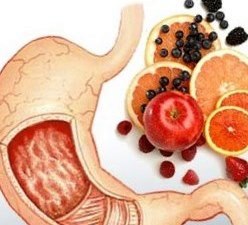
Therapeutic table number 1
A full-fledged diet, limiting "heavy" products and products-irritants of the gastric mucosa (acute, sour, smoked).
Bellee-fate-carbohydrates - 100-100-420
Up to 3000 kcal.
What can I?
"Yesterday's" bread and pastries, grated lean, dairy, cereal (rice, buckwheat, oatmeal) soups, dietary varieties of meat (fish), birds, dairy products with reduced acidity, steam vegetables (cauliflower, potatoes, carrots, beet), Baked berries and fruits.
Therapeutic table number 2
Full diet, stimulating the development of stomach secretion.
Chemical balance and calorie rate per day
Bd - 100-100-420
Up to 3000 kcal.
What can I?
"Yesterday's" bread and pastries, grated lean, dairy, cereal (rice, buckwheat, oatmeal) soups, dietary varieties of meat (fish), birds, fermented milk products, steam vegetables (cauliflower, potatoes, carrots, beets), berries and fruits With rude seeds.
Therapeutic table number 3
Full diet with the inclusion of products stimulating the intestinal work. Products contributing to the occurrence of rotten processes in the intestines are excluded.
Chemical balance and calorie rate per day
Bd - 90-90-400 g
Up to 2700 kcal.
What can I?
Whole grain wheat bread, lean soups, chicken, turkey, low-fat meat (fish), non-smear fermented milk products, dairy (buckwheat, millet, bone) porridge, raw and boiled vegetables, fruits and dried fruits, bran decoction, fruit "Freshi".
Therapeutic table number 4
Low-calorie diet (reducing the number of fats and carbohydrates), sharply exclusive products causing mechanical, thermal, chemical irritation of the intestine.
Chemical balance and calorie rate per day
Bd - 80-70-250 g
What can I?
Sugari, lean soups, mucous cereal (rice, manka) decoction, dietary steam meat (fish), bird, fresh cottage cheese, wipe lean porridges (rice, oatmeal, buckwheat), fruit kisins, rumor risks, dried blueberries.
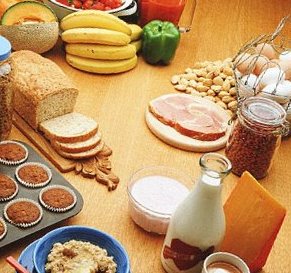
Therapeutic table number 5
Full diet, saturated with products with rich pectin and fiber, with restriction of refractory fats.
Chemical balance and calorie rate per day
Bd - 80-80-400 g
Up to 2600 kcal.
What can I?
Dried bread, lean soups, innocent meat, fish and bird, fermented fermented, cereals, cereals, vegetable and fruit mixes, grazing, honey.
Therapeutic table number 6
Reducing calorie (reduced amount of fats and proteins), an increase in the volume of free fluid and leaning products.
Chemical balance and calorie rate per day
Bd - 70-80-400 g
Up to 2600 kcal.
What can I?
Bread with bran, lean and dairy soups, boiled lean meat, fish and bird, lactic acid products, cereals (moderately), fruit and vegetable mixes.
Therapeutic table number 7
The limitation of all three components of the chemical balance within the normal range. Salad diet. Reducing the free fluid to the liter.
Chemical balance and calorie rate per day
Bd - 60-80-400
Up to 2600 kcal.
What can I?
Bread, lean soups from vegetables, dietary meat, bird and fish, dairy products, fruit vegetables in any form, fruit ice cream.
Therapeutic table number 8
Reducing calorie due to the exception of "fast" carbohydrates, partially fat, with the norm of protein in the diet. Restrictions - salt, free fluid, products that increase appetite.
Chemical balance and calorie rate per day
Bd - 110-80-150 g
Up to 1800 kcal.
What can I?
With bran and rye bread (150 g), vegetable, lean soups (2 r. Per week You can soups on meat (fish) broth), Bulk meat varieties (fish), Bird, Seafood, Low fatty milk products, Fruit and vegetable Mixes in raw form.
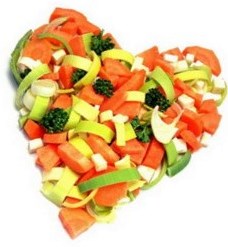
Therapeutic table number 9
Low calorie content due to exception (replacement by analogs) from the diet of sugar and "fast" carbohydrates.
Chemical balance and calorie rate per day
Bd - 100-80 (30% - vegetable) -350
Up to 2500 kcal.
What can I?
Bread from rye, wheat with bran flour, vegetable or low-fat broths and soups, cereals, legumes, innocent meat (fish), bird, products based on acidic milk, fruits and berries with sour and sweet taste.
Therapeutic table number 10
Restriction of fats, carbohydrates, salts, products exciting nervous and cardiovascular systems.
Chemical balance and calorie rate per day
Bd - 90-70-400
Up to 2600 kcal.
What can I?
Furious bread, lean soups, bird, meat (fish), fermented dairy products with low fatty, cereals, pasta, baked vegetables fruit, jam, honey.
Therapeutic table number 11
Increased caloric content - an increase in dairy proteins (60%), a vitamin and mineral component.
Chemical balance and calorie rate per day
Bd - 130-120-450
Up to 3400 kcal.
What can I?
All products are allowed, except for oily meat and cream confectionery.
Therapeutic table number 12 (rarely used)
A diverse diet, excluding products that excite the nervous system (sharp, fried meat, smoked, strong and alcohol).
Therapeutic table number 13
Low caloric content by reducing fats and carbohydrates, reinforced vitamin component.
Chemical balance and calorie rate per day
Bd - 80-70-350 g
Up to 2300 kcal.
What can I?
Lenten Soups, Wheat Suried Bread, Grass Craisters, Rice, Manna, Buckwheatted Porridge, Inspective Fish Grade (Meat), Birds, Products made on sour milk, Carrot, Potatoes, Cabbage (Color), Beet, Tomatoes, Fruits, Jam, honey, vitamin bums from a rosehip.
Medical table number 14
Full diet that excludes rich in calcium and leaning products.
Chemical balance and calorie rate per day
Bd - 90-100-400 g
What can I?
All types of bread and baking, a variety of soups (meat, cereal, fish), meat (fish), cereals, pumpkin, polka dots, mushrooms, sour berries and apples, honey, sugar.
Therapeutic table number 15
Full diet excluding sharp and "heavy" to digesting products.
Chemical balance and calorie rate per day
Bd - 95-105-400 g
What can I?
You can eat everything, except for oily meat (birds), pepper, mustard and products that include refractory animals fats.
Under the "free fluid" (at least 1.5 l) present in each of the described rations, not only water and drinks (tea, coffee), but also milk, soups, juices and kissels are implied. Vitamin and mineral "starvation" is replenished with drugs containing, fruit "Freashai" and champs.
Read also ...
- The work of "Alice in Wonderland" in a brief retelling
- That transformation. "Transformation. Attitude towards the hero from the sister
- Tragedy Shakespeare "King Lear": the plot and the history of the creation
- Gargantua and Pantagruel (Gargantua et Pantagruel) Francois Rabl Gargantua and Pantagruel Brief


















